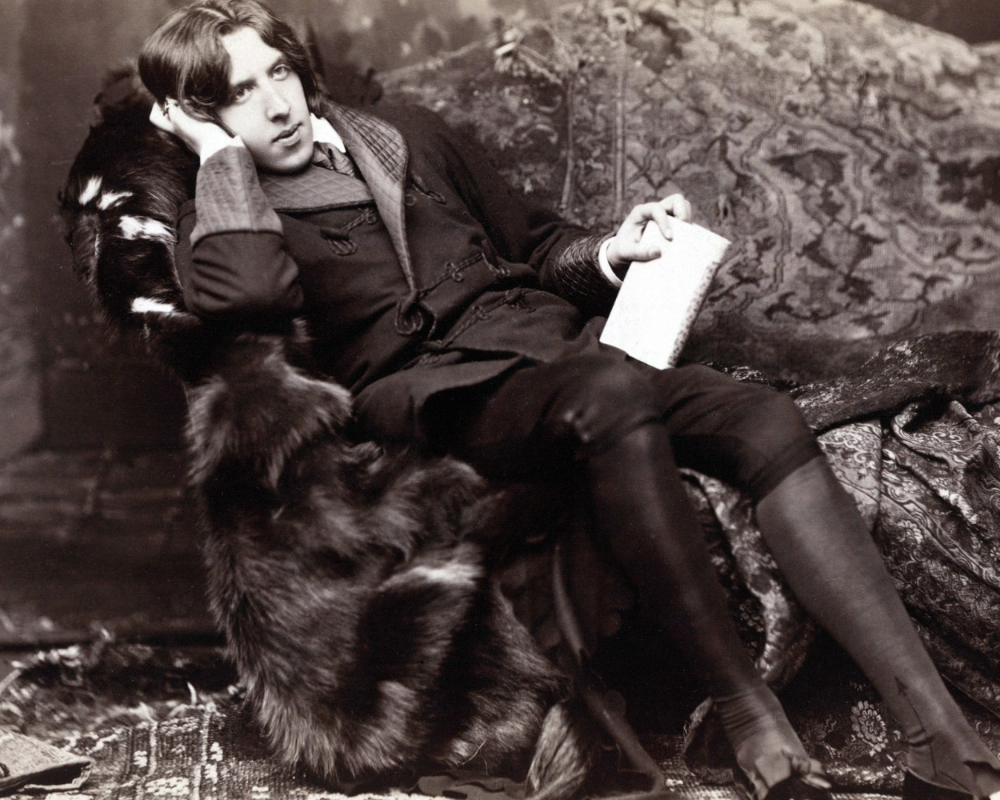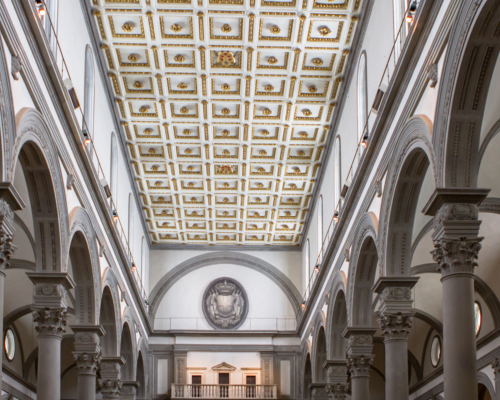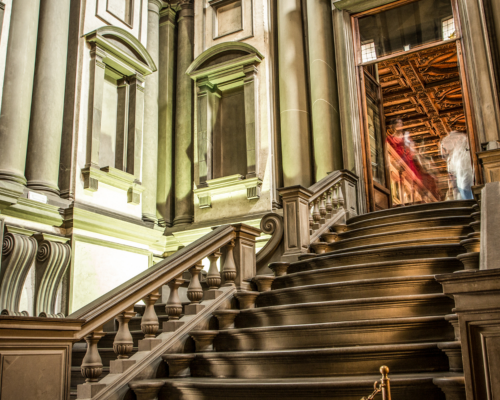Florentine itinerary among the places dear to the writer of The Portrait of Dorian Gray
Oscar Wilde, the literary genius who caused a scandal in the Victorian era for The Portrait of Dorian Gray, was a young man who grew up in the turmoil of the mid-nineteenth century.
Like so many wealthy young people who lived in those years, Wilde also embarked on the Grand Tour, a long journey to discover Italian art which in his case made stops in Florence, Bologna, Venice, Padua, Verona and Milan.
The Grand Tour, which began in the summer of 1875 when he was a student of the University of Oxford, was Wilde's first opportunity to stay in Tuscany, and he was so fascinated by it that it wasn't the only time.
In this itinerary, following the letters sent to his father in June 1875 and the poems he wrote later, we set off to discovery the places that conquered the heart of Oscar Wilde, and made him fall in love with Florence.
We start our itinerary from the Basilica of San Lorenzo. This was one of the first places Oscar Wilde visited during his initial stay.
In a long letter to his father, Sir William, the barely twenty-year-old Wilde wrote of how stunned he was by the beauty of the Basilica, by the quality of the marble used that seemed "shiny as a mirror" and by the majesty of the funerary monuments of the Medici Chapels.
Oscar Wilde was particularly struck by the tomb of Giuliano de 'Medici made by Michelangelo, with the magnificent statues of Day and Night. Once you have visited the Basilica and the Chapels, it will not be difficult to understand why he was so amazed.
We start our itinerary from the Basilica of San Lorenzo. This was one of the first places Oscar Wilde visited during his initial stay.
In a long letter to his father, Sir William, the barely twenty-year-old Wilde wrote of how stunned he was by the beauty of the Basilica, by the quality of the marble used that seemed "shiny as a mirror" and by the majesty of the funerary monuments of the Medici Chapels.
Oscar Wilde was particularly struck by the tomb of Giuliano de 'Medici made by Michelangelo, with the magnificent statues of Day and Night. Once you have visited the Basilica and the Chapels, it will not be difficult to understand why he was so amazed.
The second stop is the Laurentian Library, which is accessed from the cloister of the Basilica of San Lorenzo.
The Laurentian Library holds one of the most important manuscript collections in the world and the grandeur of the collection immediately conquered Wilde, as well as the structure that was designed by Michelangelo Buonarroti between 1519 and 1534.
In the library, there are valuable copies of ecclesiastical manuscripts, as well as private manuscripts belonging to the Medici family of Cosimo the Elder.
The second stop is the Laurentian Library, which is accessed from the cloister of the Basilica of San Lorenzo.
The Laurentian Library holds one of the most important manuscript collections in the world and the grandeur of the collection immediately conquered Wilde, as well as the structure that was designed by Michelangelo Buonarroti between 1519 and 1534.
In the library, there are valuable copies of ecclesiastical manuscripts, as well as private manuscripts belonging to the Medici family of Cosimo the Elder.
The third stage of this walking itinerary through Florence is the Archaeological Museum of Florence, housed in Palazzo della Crocetta.
However, the place visited by Oscar Wilde was the Etruscan Museum, which was located at the time in the ex monastery of Sant’Onofrio and included the Fuligno "Cenacolo". The works described in his letters are now partially exhibited in the Archaeological Museum.
In particular, the writer was struck by a large stone tomb with a fresco depicting a chariot carrying a naked young man to heaven. For Wilde, this representation was the emblem of Etruscan funerary art that was pervaded by a state of happiness after death.
Among the other works that aroused Wilde's curiosity were the many sculpted sarcophagi, vases and urns of all shapes and sizes, leaf-shaped swords, household utensils and the large collection of coins, one of which caught his attention: a coin "the size of a sandwich and stamped with a ship on one side and a double-faced Janus on the other".
To conclude the visit of the Archaeological Museum, you can also visit the section dedicated to Egyptian art, but for the record, we inform you that the works collected here were defined by Oscar Wilde as too "grotesque and uncouth" when compared with purity of the works of Etruscan art.
The third stage of this walking itinerary through Florence is the Archaeological Museum of Florence, housed in Palazzo della Crocetta.
However, the place visited by Oscar Wilde was the Etruscan Museum, which was located at the time in the ex monastery of Sant’Onofrio and included the Fuligno "Cenacolo". The works described in his letters are now partially exhibited in the Archaeological Museum.
In particular, the writer was struck by a large stone tomb with a fresco depicting a chariot carrying a naked young man to heaven. For Wilde, this representation was the emblem of Etruscan funerary art that was pervaded by a state of happiness after death.
Among the other works that aroused Wilde's curiosity were the many sculpted sarcophagi, vases and urns of all shapes and sizes, leaf-shaped swords, household utensils and the large collection of coins, one of which caught his attention: a coin "the size of a sandwich and stamped with a ship on one side and a double-faced Janus on the other".
To conclude the visit of the Archaeological Museum, you can also visit the section dedicated to Egyptian art, but for the record, we inform you that the works collected here were defined by Oscar Wilde as too "grotesque and uncouth" when compared with purity of the works of Etruscan art.
We continue our itinerary by reaching the Abbazia of San Miniato al Monte, perhaps to have a quick lunch just like Oscar Wilde did and then follow that with a visit to the Abbey.
Following this visit, the Irish writer studied the life of the saint to whom the Abbazia is dedicated and decided to write a poem entitled San Miniato.
According to legend, San Miniato was beheaded on the banks of the Arno river and with his own head in his hands, he reached the hill to die on the spot where the Abbazia stands today. In the poem, Wilde refers to the life of the saint and invokes the Virgin as if seeking to be reborn and create his own poetic identity.
We continue our itinerary by reaching the Abbazia of San Miniato al Monte, perhaps to have a quick lunch just like Oscar Wilde did and then follow that with a visit to the Abbey.
Following this visit, the Irish writer studied the life of the saint to whom the Abbazia is dedicated and decided to write a poem entitled San Miniato.
According to legend, San Miniato was beheaded on the banks of the Arno river and with his own head in his hands, he reached the hill to die on the spot where the Abbazia stands today. In the poem, Wilde refers to the life of the saint and invokes the Virgin as if seeking to be reborn and create his own poetic identity.
We conclude our itinerary with a walk along the Arno river, perhaps to wait for the sunset while reading the 1881 poem By the Arno that the poet wrote precisely to honour this place. The writing reads like an invitation to appreciate the beauty that surrounds us, every time we have the opportunity.
Oscar Wilde loved to take long walks here and it was the Lungarno that sealed his deep love for Florence.
Then, after the publication of his novel The Picture of Dorian Gray, he was tried for the outrageous content that went against British Victorian morality.
Wilde returned to Florence in May 1894 along with his companion Lord Alfred Douglas, known as “Bosie”, son of the Marquis of Queensberry. Here, they spent a short period during which the two lived their lives freely. In the city, homosexuality was accepted, so much so that in those years, Florence became the favorite place of many European nobles, in particular English, who escaped the harsh sentences of imprisonment for homosexuals.
We conclude our itinerary with a walk along the Arno river, perhaps to wait for the sunset while reading the 1881 poem By the Arno that the poet wrote precisely to honour this place. The writing reads like an invitation to appreciate the beauty that surrounds us, every time we have the opportunity.
Oscar Wilde loved to take long walks here and it was the Lungarno that sealed his deep love for Florence.
Then, after the publication of his novel The Picture of Dorian Gray, he was tried for the outrageous content that went against British Victorian morality.
Wilde returned to Florence in May 1894 along with his companion Lord Alfred Douglas, known as “Bosie”, son of the Marquis of Queensberry. Here, they spent a short period during which the two lived their lives freely. In the city, homosexuality was accepted, so much so that in those years, Florence became the favorite place of many European nobles, in particular English, who escaped the harsh sentences of imprisonment for homosexuals.


